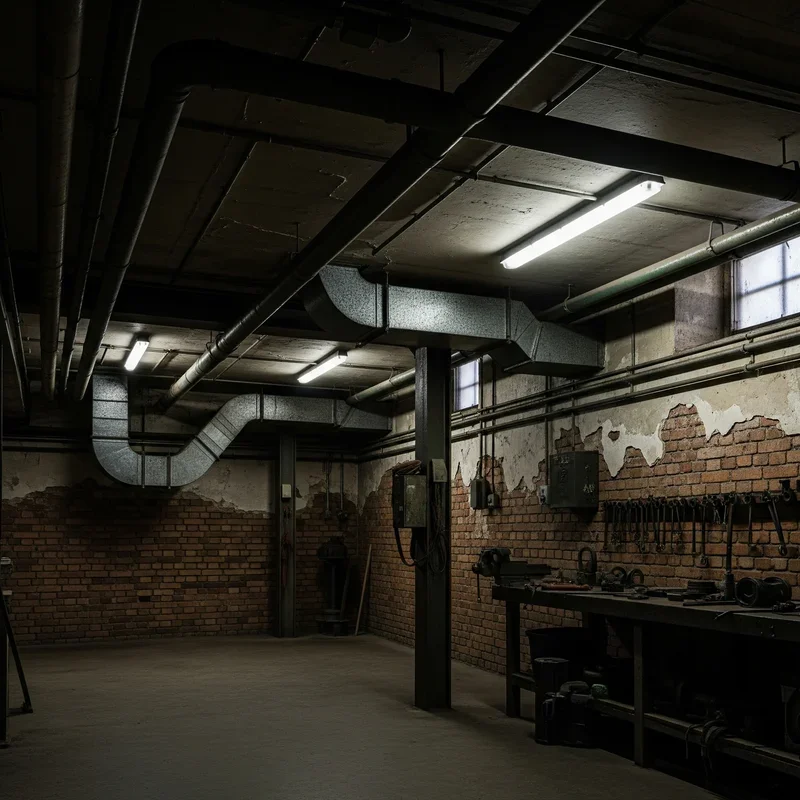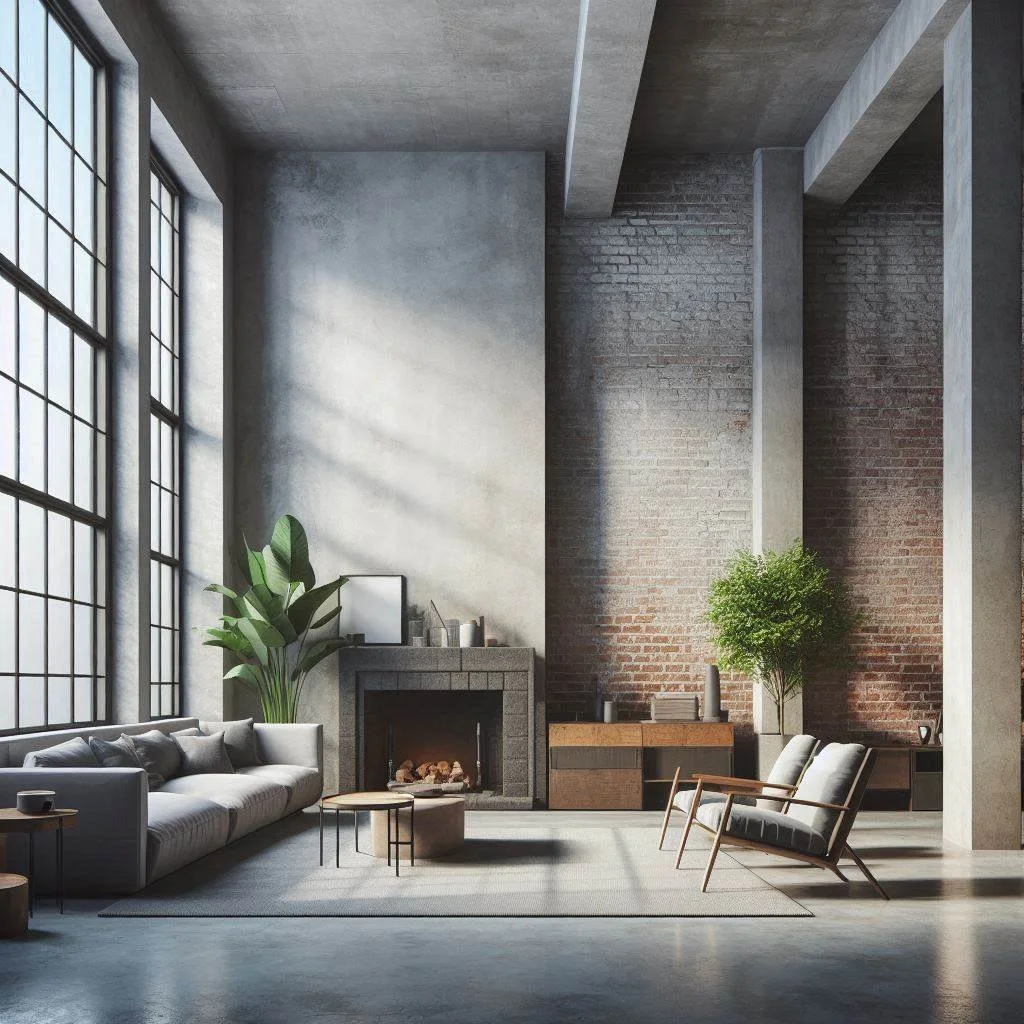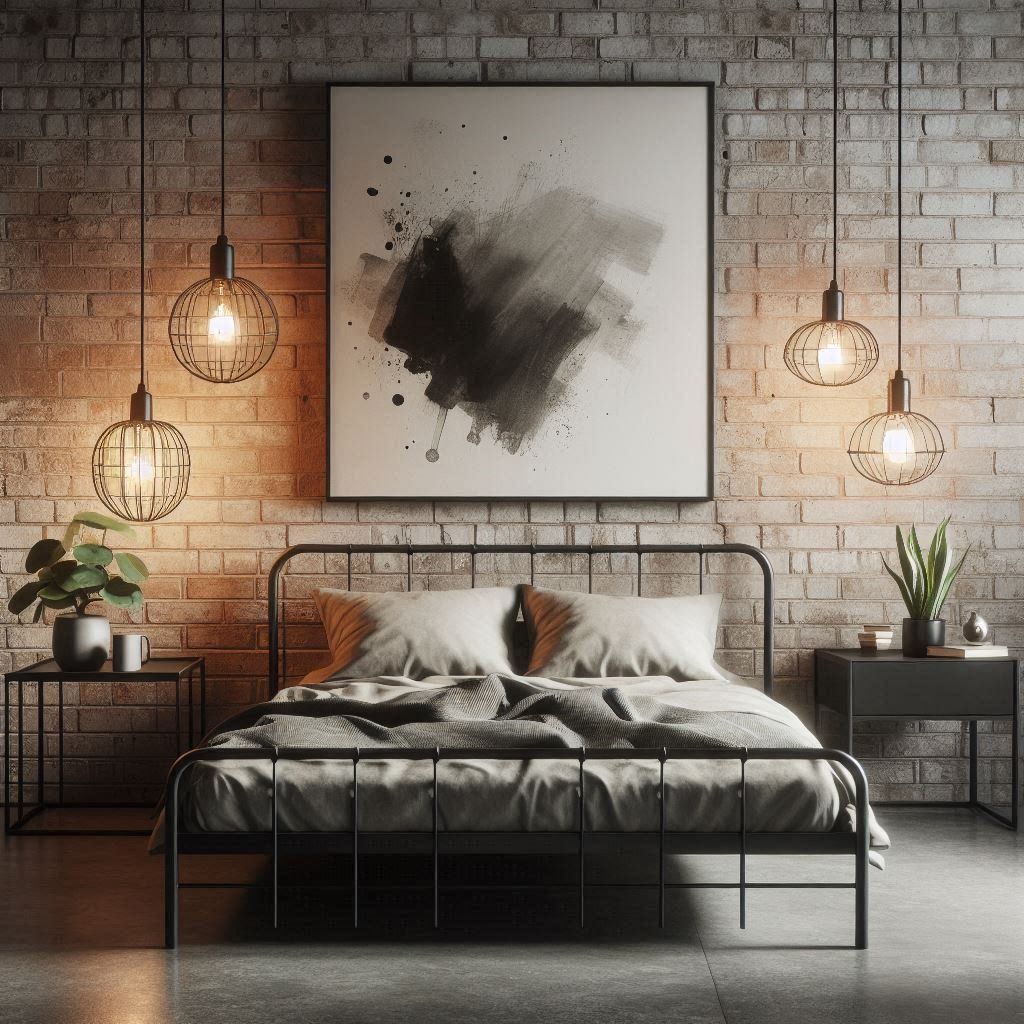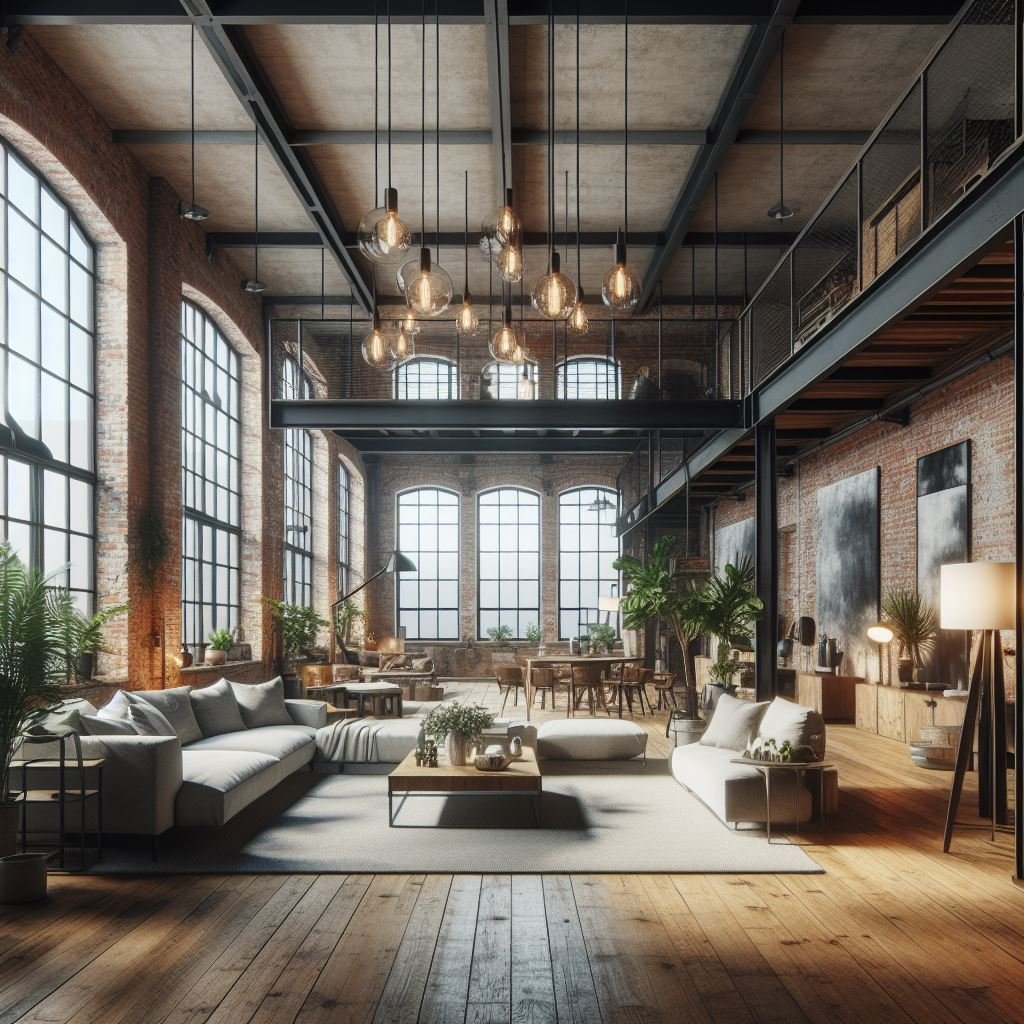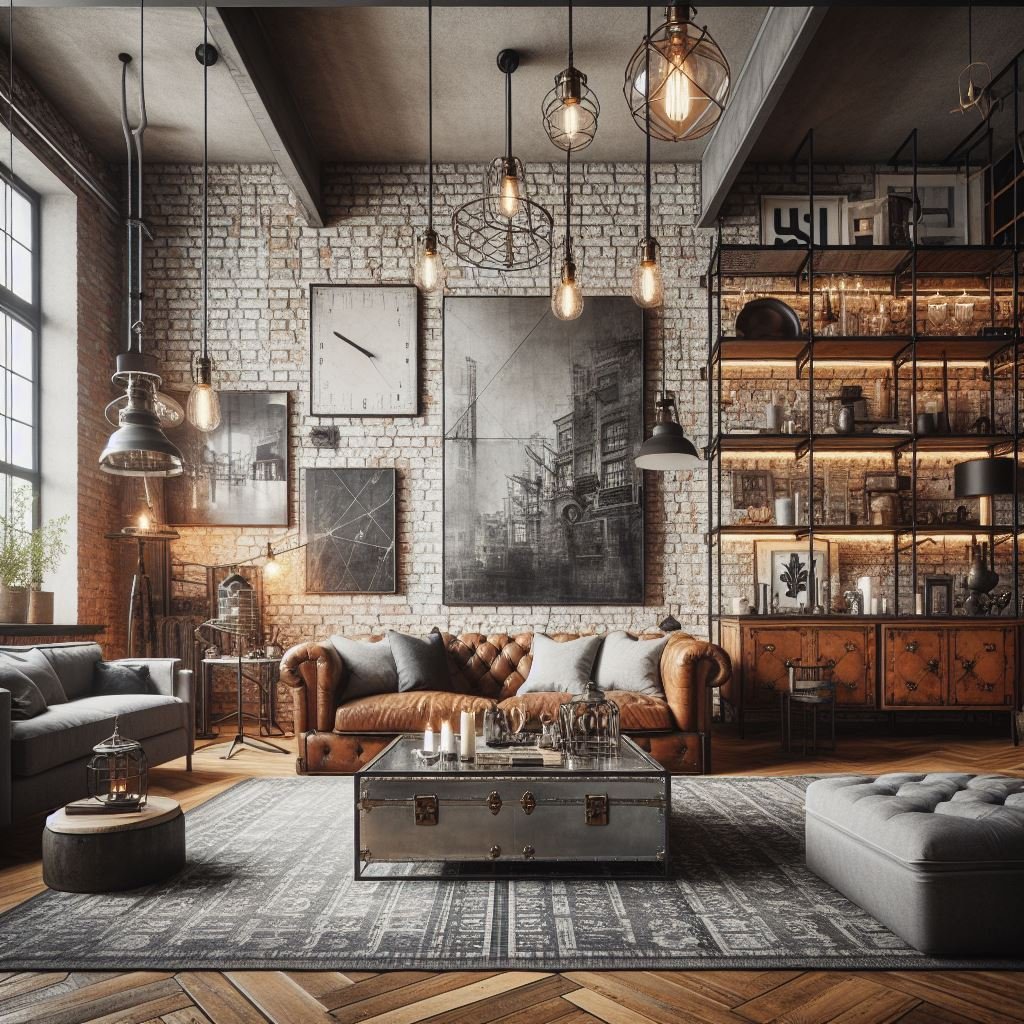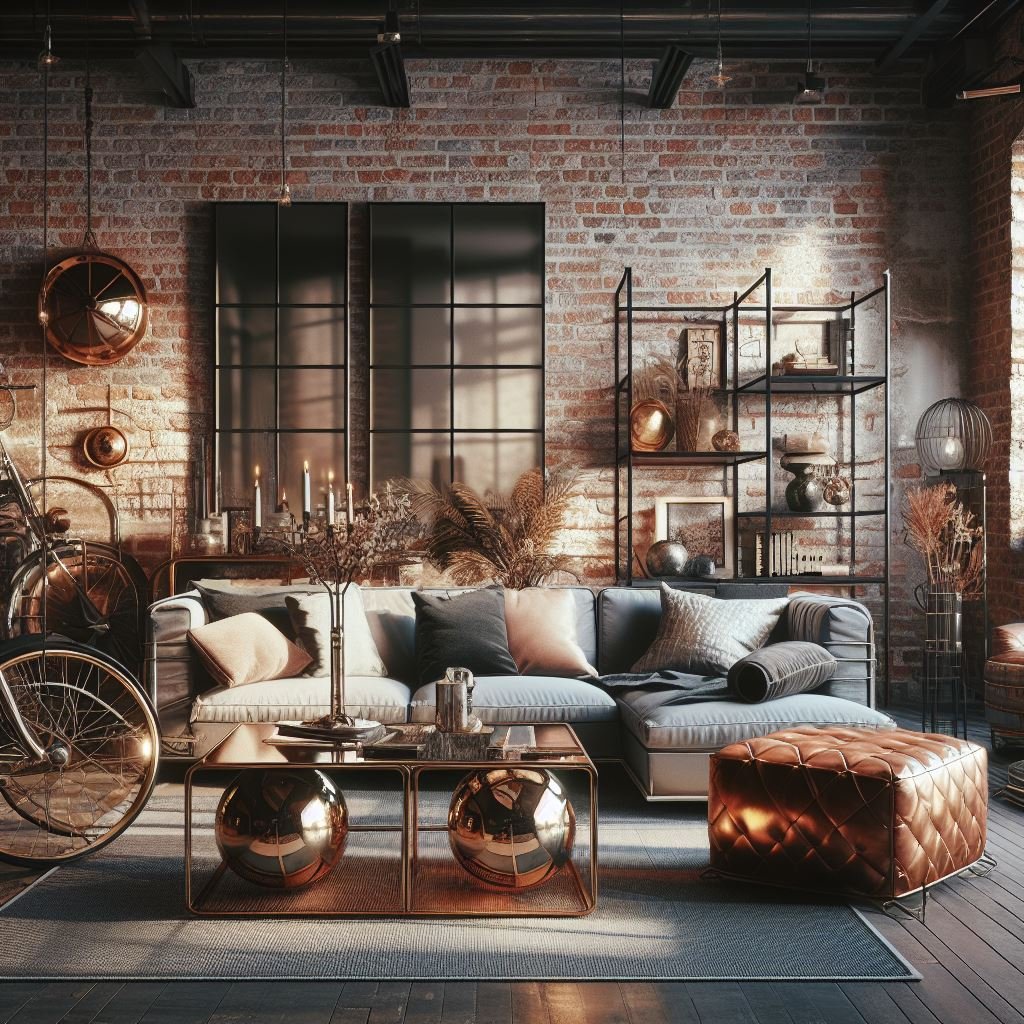15 Industrial Basement Ideas for a Modern Urban Look
Transform your basement with 15 industrial design ideas featuring exposed brick, metal elements, and urban style for the ultimate modern space.
What if your basement could channel the raw energy of a converted Brooklyn loft or a trendy downtown warehouse? That's the magnetic pull of industrial design, where unfinished becomes unforgettable and rough edges equal refined style! This aesthetic has evolved from necessity to luxury, transforming forgotten basement spaces into the coolest rooms in the house. Industrial design celebrates the beauty of exposed materials, structural elements, and utilitarian fixtures that most styles try to hide. Whether you're starting with concrete walls that already scream industrial or working with a finished basement that needs an edge makeover, this style adapts to any starting point. The beauty lies in embracing imperfection, where exposed pipes become sculptural elements and concrete floors transform into design statements. Think of industrial basements as urban sanctuaries that reject the polished in favor of the authentic. Ready to discover how raw materials and urban aesthetics can turn your basement into a space that feels like it belongs in a design magazine?
1. Exposed Brick Wall Features
Strip away the drywall to reveal the authentic brick beneath, or install brick veneer to capture that quintessential industrial vibe! Exposed brick adds instant character with its varied textures and warm red tones that soften industrial coolness. The natural imperfections in brick, from color variations to mortar lines, create visual interest that painted walls never achieve. Seal brick walls to prevent dust while maintaining their raw appearance and original patina. Consider painting one brick wall white or charcoal for a modern twist that brightens the space while keeping texture. Mix exposed brick with smooth walls to prevent overwhelming the basement with too much texture. Strategic lighting washing across brick surfaces creates dramatic shadows that change throughout the day. This single element can transform sterile basements into spaces with genuine urban character and historical depth.
2. Polished Concrete Flooring
Embrace the industrial foundation beneath your feet by polishing existing concrete floors into gleaming surfaces that rival any high-end flooring! Polished concrete offers durability that withstands heavy traffic while requiring minimal maintenance beyond occasional mopping. The reflective surface bounces light around, making basements feel larger and brighter than traditional flooring options. Add radiant heating beneath concrete for year-round comfort that eliminates the cold floor problem. Staining techniques create various colors and patterns, from solid charcoal to marbled effects that add visual interest. The seamless nature eliminates grout lines and transitions, creating clean, modern aesthetics. Consider scoring patterns into concrete for added texture or defining different zones within open floor plans. This cost-effective solution celebrates rather than conceals your basement's industrial bones while providing practical, stylish flooring.
3. Metal Staircase Designs
Replace traditional wooden stairs with metal staircases that become sculptural centerpieces defining your industrial basement! Steel stringers with wooden or metal treads create striking geometric patterns that feel both sturdy and visually light. Open riser designs maintain sight lines and prevent staircases from blocking light or feeling heavy. Cable railings or simple metal bars provide safety without obstructing views, maintaining the open industrial aesthetic. The metalwork can be left raw for authentic industrial appeal or powder-coated in black for a more refined look. Floating stairs attached to walls create dramatic effects that seem to defy gravity. Add LED strip lighting beneath treads for safety and ambiance during evening hours. These architectural elements prove that functional necessities can become design focal points worthy of admiration.
4. Industrial Pipe Shelving
Transform ordinary plumbing pipes into extraordinary shelving systems that combine function with industrial authenticity! Black iron pipes paired with reclaimed wood boards create customizable storage that adapts to any wall configuration. The modular nature allows you to build shelving that grows with your needs, adding sections as collections expand. These DIY-friendly projects offer significant savings compared to traditional built-ins while delivering superior style impact. Mix pipe diameters for visual interest, using thicker pipes for bottom shelves and thinner ones above. The exposed hardware becomes part of the design, celebrating rather than hiding structural elements. Consider ceiling-mounted pipe systems for hanging storage that keeps floors clear. This approach works equally well for books, barware, or displaying industrial-themed collections that enhance your basement's urban character.
5. Edison Bulb Lighting Systems
Illuminate your industrial basement with Edison bulbs that cast warm, ambient light while serving as decorative elements themselves! These vintage-style bulbs with visible filaments create nostalgic charm that softens industrial hardness. String them across ceilings for casual café-style lighting or cluster them at varying heights for dramatic effect. Metal cages around bulbs add protection and industrial authenticity while creating interesting shadow patterns. Track lighting with Edison bulbs offers flexibility to adjust lighting zones as room functions change. The warm color temperature counteracts cool concrete and metal surfaces, creating inviting atmospheres. Consider oversized Edison bulbs as statement pieces over dining or bar areas. Smart Edison bulbs allow dimming and color temperature adjustment while maintaining vintage aesthetics. This lighting choice proves that functional elements can be beautiful focal points.
6. Steel Beam Ceiling Treatments
Expose or add steel beams to create ceiling interest that channels authentic industrial architecture! Real steel beams provide structural honesty while faux beams offer the look without weight concerns. Paint beams black for dramatic contrast against lighter ceilings or leave them raw for genuine industrial patina. The linear nature of beams can direct eye movement, making narrow basements feel longer or wide spaces more intimate. Position beams to define different zones within open floor plans, creating visual boundaries without walls. Combine steel beams with wood planking between them for warm industrial contrast. LED strip lighting along beams provides indirect illumination that highlights architectural elements. These ceiling treatments transform flat, boring surfaces into dynamic design features that anchor your industrial theme.
7. Concrete Bar Installations
Build a showstopping bar using poured concrete that becomes your basement's social centerpiece! Concrete's moldability allows custom shapes from straight lines to curved designs that flow with your space. The material's thermal mass keeps drinks cool naturally while providing durability for heavy use. Polish the surface for easy cleaning or leave it slightly rough for authentic industrial texture. Embed LED strips in concrete for under-bar lighting that creates ambiance without visible fixtures. Combine concrete with metal bar stools and industrial pendant lights for cohesive design. Add metal brackets or supports that celebrate structural elements rather than hiding them. This permanent installation increases home value while providing the perfect entertainment hub for your industrial basement retreat.
8. Metal and Wood Furniture Combinations
Balance industrial coolness with natural warmth through furniture that marries metal frames with wooden surfaces! Dining tables with steel legs and reclaimed wood tops epitomize industrial style while remaining functional. The contrast between materials creates visual interest that prevents spaces from feeling too cold or too rustic. Choose furniture with visible welds and bolts that celebrate construction methods rather than concealing them. Distressed leather seating with metal frames adds comfort without sacrificing industrial edge. The durability of metal and wood combinations ensures furniture withstands basement moisture better than traditional pieces. Mix different metal finishes like black iron, brushed steel, and copper for sophisticated industrial layering. This furniture style works across various functions from entertainment centers to coffee tables, maintaining design consistency.
9. Industrial Kitchen Elements
Incorporate industrial kitchen features that make your basement bar or kitchenette feel like a trendy urban restaurant! Stainless steel appliances and countertops provide professional functionality with industrial aesthetics. Open shelving made from pipes and wood displays dishes and glassware as part of the décor. Subway tiles with dark grout create classic industrial backsplashes that are both practical and stylish. Commercial-style faucets and sinks add restaurant quality that elevates everyday tasks. Concrete countertops offer customizable surfaces that develop unique patinas over time. Metal bar carts provide mobile storage that maintains industrial themes while adding flexibility. These kitchen elements prove that utilitarian design can be beautiful, transforming functional spaces into design statements that impress guests.
10. Factory-Style Windows
Install or modify windows to achieve that coveted factory aesthetic with multi-pane designs and metal frames! Large gridded windows flood basements with natural light while maintaining industrial character through their geometric patterns. Black metal frames create bold outlines that frame views and add architectural interest to blank walls. If adding windows isn't possible, use mirrors designed to look like industrial windows for similar effects. Frosted or wire glass maintains privacy while allowing light transmission in street-level basements. The repetitive pattern of factory windows creates rhythm and order that balances industrial rawness. Consider interior windows between basement rooms that maintain open feelings while providing some separation. These architectural elements connect your basement to industrial heritage while solving practical lighting challenges.
11. Exposed Ductwork Design
Celebrate rather than conceal your basement's mechanical systems by incorporating exposed ductwork into your industrial design! Paint ducts matte black for sophisticated integration or leave them silver for authentic industrial appeal. The sculptural quality of ductwork adds visual interest to ceilings while maintaining practical ventilation functions. Route ducts strategically to create geometric patterns or frame specific areas within open floor plans. The honesty of exposed systems aligns perfectly with industrial design's celebration of function. Consider spiral ducts for added visual interest compared to rectangular alternatives. Proper insulation prevents condensation while maintaining the exposed aesthetic you're after. This approach transforms necessary infrastructure into design features that enhance rather than detract from your basement's style.
12. Wire Mesh Panels and Dividers
Define spaces within your open basement using wire mesh panels that maintain sight lines while creating subtle boundaries! These industrial dividers work perfectly for separating work areas from entertainment zones without building solid walls. The transparency of mesh maintains the open feel essential to industrial design while providing some privacy. Mount mesh panels in metal frames that can slide or pivot for flexible space configuration. Use mesh as decorative elements on walls, perhaps backing open shelving or creating textured accent panels. The grid pattern adds geometric interest that complements other industrial elements like factory windows. Consider different mesh sizes and patterns to create visual variety while maintaining material consistency. These versatile elements prove that room division doesn't require sacrificing openness.
13. Industrial Color Schemes
Build your industrial basement's personality through strategic color choices that enhance urban aesthetics! Charcoal, black, and gray dominate industrial palettes, creating moody sophistication that defines the style. Add warmth through rust, copper, and brown tones that reference oxidized metal and aged wood. White provides necessary brightness, preventing spaces from feeling too cave-like or oppressive. The key lies in layering different shades within the same color family for sophisticated depth. Accent colors should be minimal and purposeful, perhaps a pop of yellow for caution-inspired energy. Matte finishes feel more authentic than glossy surfaces that seem too refined for industrial spaces. These color choices create cohesive environments that feel intentionally designed rather than accidentally industrial.
14. Vintage Industrial Signage
Decorate walls with authentic or reproduction industrial signage that adds character while reinforcing your urban theme! Old factory signs, vintage advertisements, and industrial safety posters bring historical context to modern spaces. Metal letters spelling out words or numbers create three-dimensional wall art with industrial relevance. Neon signs add color and light while maintaining that urban warehouse vibe. The patina and wear on vintage pieces add authenticity that new decorations can't replicate. Large-scale typography makes bold statements that anchor wall compositions. Mix different sign styles and eras for collected-over-time appeal rather than matching sets. These decorative elements tell stories while contributing to your basement's industrial narrative without feeling forced or theme-park-like.
15. Modern Tech Integration
Seamlessly blend cutting-edge technology with industrial aesthetics to create basements that honor the past while embracing the future! Hide smart home systems within industrial fixtures, like speakers inside metal pipes or screens behind mesh panels. Cable management through exposed conduits celebrates rather than conceals necessary wiring. Gaming setups with metal and wood desks maintain industrial themes while supporting modern entertainment. Mount TVs on pipe brackets that feel intentional rather than afterthought additions. The contrast between raw industrial elements and sleek technology creates intriguing juxtapositions. Use smart lighting to adjust ambiance while maintaining Edison bulb aesthetics. This integration proves that industrial basements can be both authentically styled and technologically advanced.
Conclusion
Industrial basement design transforms underground spaces from forgotten storage areas into the most character-filled rooms in your home. These fifteen ideas demonstrate that celebrating raw materials, exposed systems, and utilitarian aesthetics creates sophisticated spaces that feel both timeless and contemporary. Whether you commit fully to industrial design or incorporate select elements, the key lies in embracing authenticity over perfection. Your industrial basement becomes a testament to the beauty of honest materials and functional design.
Read next: 15 Industrial Kitchen Ideas for a Modern Look
Frequently Asked Questions
Q1: Do industrial basements feel too cold and unwelcoming?
A1: Add warm lighting, soft textiles, and wood elements to balance industrial coolness effectively.
Q2: What's the best flooring for industrial basements?
A2: Polished concrete, epoxy coatings, or luxury vinyl planks with concrete looks work perfectly.
Q3: Can industrial style work in small basements?
A3: Yes! Open shelving and minimal furniture keep industrial spaces feeling spacious and uncluttered.
Q4: How do I prevent industrial basements from looking unfinished?
A4: Intentional lighting, quality furniture, and strategic decoration distinguish designed from unfinished spaces.
Q5: What ceiling height works best for industrial design?
A5: Higher ceilings enhance industrial aesthetics, but strategic design works with standard eight-foot heights.

